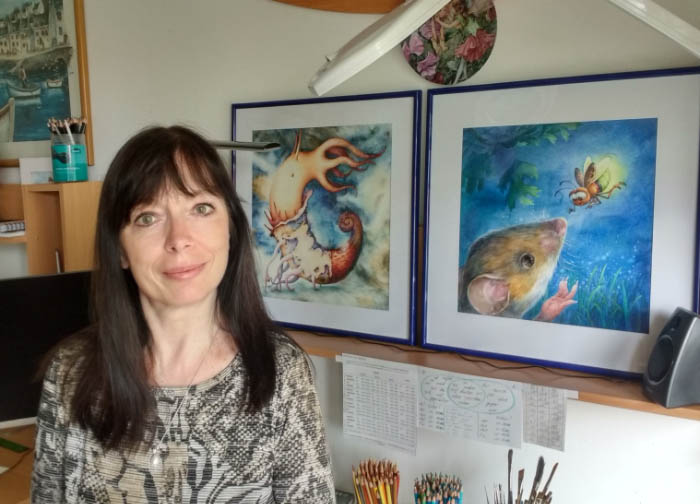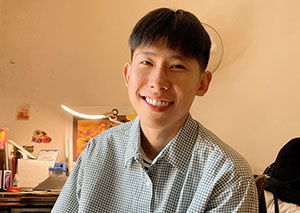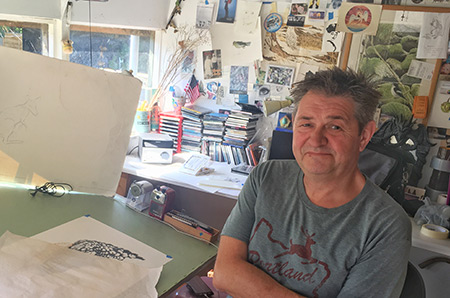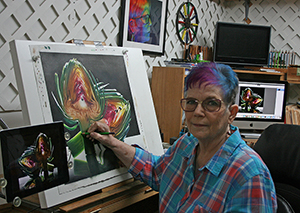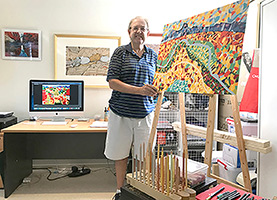
“A String of Memories” by JD Hillberry
Charcoal and Graphite on White Watercolor Paper – 11″ x 14″
Tinker Toys, Yo-Yos, Jacks, and Lincoln Logs and are some of the toys that baby-boomers grew up with. These toys from the past represent a much simpler time that many people yearn for. A photo captures a moment in time, but I’ve drawn the Yo-Yo string in a way that links us to the past, when kids actually played with toys instead of looking at screens and pushing buttons.
It gives me great pleasure to present this final part of a three part interview with the legendary realism pencil artist J D Hillberry.
Read Part One here:
His artworks are more realistic than a photograph and his contribution to the development of thousands of artist’s skills over the years through his education materials is phenomenal. In this interview we continue to look into the inspiration behind his artworks and also discover some of his helpful recommendations and at the end of the interview you will find a list of J D Hillberry’s most valuable resources to help you further develop your skills.
Interview with JD Hillberry Cont’d:
Q: JD please can you tell us who or what inspires you to be the best you can be as an artist.
A: I love looking at great, creative artwork on the internet and everywhere I go. Everything from abstract works to super realism. I hate to mention artists by name because I’d probably forget someone. With the internet, the world is getting very small which makes it easy to find the best of whatever you are interested in.

“Paper Metamorphosis” by JD Hillberry
Charcoal, Graphite and Carbon on White Watercolor Paper – 8″ x 10″
This butterfly is depicted looking back at where he came from. Perhaps looking back at his life before he was able to enjoy his new found freedom.
Secrets to Realistic Artwork
Q: Do you have any special unique advice for other artists (secrets) who are learning to draw in realism at this very high standard that you are drawing at.

“Fooled” by JD Hillberry
Charcoal, Graphite and Carbon on White Watercolor Paper – 14″ x 11″
The idea of this drawing incorporates several layers of deception. The butterfly may have mistaken a photo of a flower for the real thing, and you, the viewer, may have been fooled as well, since the entire image is drawn.
A: For realism, one of the most important things an artist needs to work on is expanding their range of values. The world we are trying to represent is full of high contrasts and if you want to represent any portion of that realistically on paper, you need to use the lightest lights and darkest darks you have available. Many years ago, I started using charcoal pencils for the darkest values in my work. That solved the graphite shine problem that many people (including customers) find distracting. It also increased my dark value range dramatically allowing me to delve into the “trompe l’oeil work I do now.
Tips for 3D Realism
All of my work is done on white watercolor paper and there is very little white left of it by the time I’m finished. Only the very brightest highlights on the subjects remain white. The backgrounds are usually rendered in charcoal and the subjects are a mixture of graphite and carbon pencils. I use a carbon pencil to draw the illusion of tape because it has a slightly warmer tone that charcoal or graphite. Graphite is great for very smooth textures so I use it to create the look of wrinkles in paper. Since these different mediums reflect light differently, the original drawings look more three dimensional than they would with one single medium.
Properties of Light on Subjects
Another extremely important aspect of realistic drawing is learning to see and understand the properties of light and how they effect a variety of subjects. Michelangelo said “A man paints with his brains and not with his hands.” The more you know about light, the more you will be able to create dynamic, meaningful artwork instead of simply copying a bad photograph.
Reference Material Guide
Q: I know that you don’t ever just simply ‘copy’ from a photograph. There are many skills involved to create an original artwork from a photograph.Your drawings are more realistic than the photograph. Please tell us about some important aspects of photography that artists should consider (be aware of) when using photos in drawing.
A: Photography should be used as a tool to create better artwork. Most of the time the reference photos I use to create my work have very little to do with my final drawing. They are just an aid in getting there.
The most important thing to remember when drawing from a photograph is that you don’t want to be a slave to it. The photo you are looking at is the result of the camera settings that were used. By simply copying it, you are limiting yourself. The photo could be under or overexposed, contain lens distortion, or many, many other problems you don’t want to duplicate in a drawing.
These days you can put a photo into a image rendering program like Photoshop to lighten the image to see more detail in the shadows or darken it to see more detail in over exposed areas. You can even correct lens distortion. It is a mistake to rely on only one printed photograph when much more information is available for artists in a digital format we can manipulate to learn more about our subjects. You don’t have to put all that information in your artwork, but at least it is available and you have a choice to use it or not.
Realistic Rendering
Most of my current trompe l’oeil drawings are a combination of reference photos and drawing from life. When I’m rendering subjects like pieces of paper, photographs etc., I tape the subject directly on my drawing table next to my drawing. The light is coming from the left in these drawings because they are lit from my drawing lamp which is on my left.

J D Hillberry was chosen to be the featured artist at a huge art festival in Houston, Texas. They used his self portrait “The Man Behind the Artwork” to advertise the exhibit on billboards all over the city.
Q: Please tell us about any significant awards you have won or exhibitions that have made an impact on your life.

“A Work In Progress” by JD Hillberry
Charcoal, Graphite and Carbon on White Watercolor Paper – 20″ x 16″
“This drawing is a statement about how we are all in a state of growth and development. This has been a reoccurring theme in many of my pieces. It all begins with the tiny pencil in the smallest image on the tee shirt. In each larger image, I am depicted in various stages of creating myself until I’m real enough to reach out and sign the self portrait.”
A: I was chosen to be the featured artist at a huge art festival in Houston, Texas. They used my self portrait “The Man Behind the Artwork” to advertise the exhibit on billboards all over the city. When I drove into Houston for the show, I nearly had a wreck seeing my face on one of the billboards. It was a very surreal moment.
The Artist’s Magazine
Back in the 90’s my focus was on big gallery shows and invitational shows with big opening receptions. I did one in Cincinnati Ohio called “Great American Artists”. At the artist’s reception I met the editor of “The Artist’s Magazine” and she encouraged me to submit some technique articles to the magazine. Of course I jumped at that opportunity and the first feature was published in the July 1997 issue. I had a great response to it and started submitting articles about once a month. Several more were published and after a while, the editor told me that since I had so much technique info to share that they were turning me over to their book division – Northlight Books. My book “Drawing Realistic Textures in Pencil” was published in 1999. To date, it has sold over 70,000 copies worldwide and has been translated into several different languages.
Drawing Technique Videos
Rather than producing another book, I am currently creating high definition drawing technique videos. I’ve learned from conducting workshops that students can learn much more from watching me demonstrate the techniques rather than just trying to follow along with pictures and descriptions. These drawing technique videos will be the next best thing to attending one of my live workshops. For anyone interested, you can sign up on my workshop email list on my site www.jdhillberry.com to be notified when these videos are available.
Summary
This ends the third of a three-part interview with JD Hillberry. Thank you so much J D for agreeing to this interview and sharing the deeper side of you with us all here. You truly are a n inspiration; a legendary artist and we admire you a lot.
Let us know what your thoughts about JD Hillberry and his art on our Facebook page:
For more information about JD Hillberry:
Click the links below:
- Website: www.jdhillberry.com
- Facebook: /DrawingTechniquesJDHillberry
- LinkedIn: LinkedIn.com/JDHillberry
Helpful Tutorials by JD Hillberry:
Workshop Schedule:
Intro to works and techniques:
Avoiding Graphite Shine:
Blending and Shading:
Drawing Papers recommended for Realistic Drawings
Using Frisket to Preserve White Areas in Drawings:
J D Hillberry’s Book and Drawing Kit:
Personally Signed and Dedicated Drawing Technique Book – Drawing Realistic Textures in Pencil:
Complete Drawing Kit, DVD and Signed Drawing Technique Book





